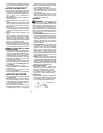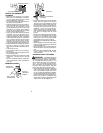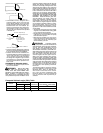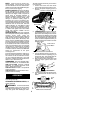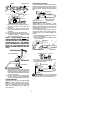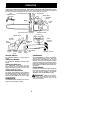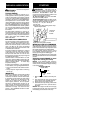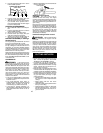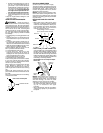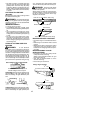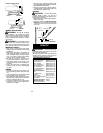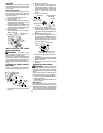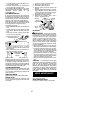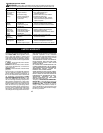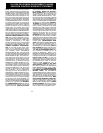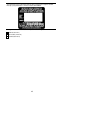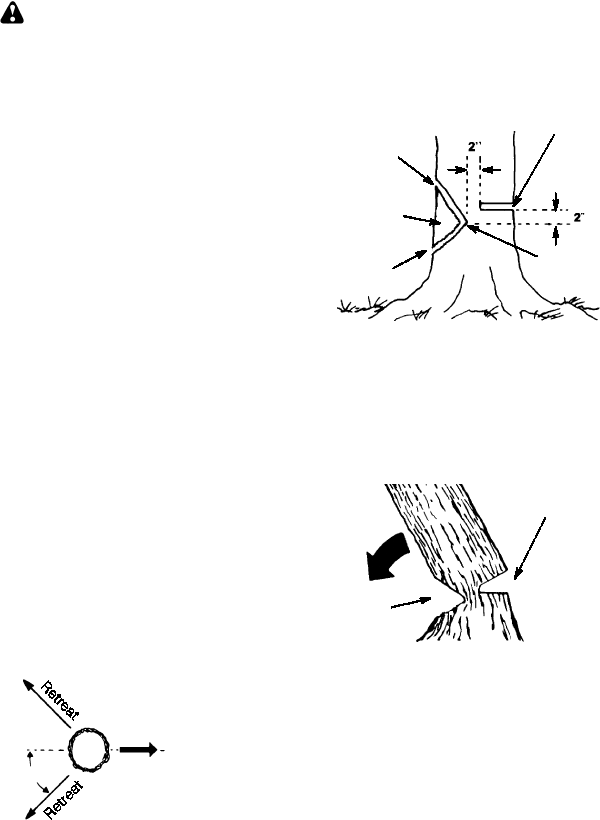
11
S
Release the throttle trigger as soon as
the cut is c ompleted, allowing the en-
gine to idle. If you run the saw at full
throttlewithoutacutting load,unnec es-
sary wear can occur to the chain, bar,
and engine.
It is recommended that
the engine not be operated for lon-
ger than 30 seconds at full throttle.
S
Toavoidlosingcontrolwhenc utis com-
plete,donotputpressureonsawatend
of cut.
S
Stop the engine before setting the saw
down after cutting.
TREE FELLING TECHNIQUES
W ARNING:
Check for broken or
dead branches which can fall while cutting
causing serious injury. Donotcutnearbuild-
ings orelectrical wires ifyoudo notknowthe
directionoftreefall, norcutatnightsinceyou
will not be ale to see well, nor during bad
weathersuch asrain, snow,or strongwinds,
etc. If thetreemakes contactwith any utility
line, the utility company should be notified
immediately .
S
Carefullyplanyoursawingoperationinad-
vance.
S
Cleartheworkarea. Youneedacleararea
all aroundthetreeso youcanhavesecure
footing.
S
The chain saw operator should keep on
the uphill side of the terrain as the tree is
likely torollor s lidedownhill afteritisfelled.
S
Study the natural conditions that can cause
thetreetofallinaparticulardirection.
Natural conditions that can cause a tree to
fall in a particular direction include:
S
The wind direction and speed.
S
The lean of the tree. The lean of a tree
might not be apparent due to uneven or
sloping terrain. Usea plumb orlevel tode-
termine the direction of tree lean.
S
Weight and branches on one side.
S
Surrounding trees and obstacles.
Look for decay and rot. Ifthe trunkis rotted,
it can snap and fall toward the operator.
Check for broken or dead branches which
can fall on you while cutting.
Make sure thereis enough roomfor the tree
to fall. Maintain a distance of
2-1/2
tree
lengths fromthe nearest person o r otherob-
jects. Enginenoise candrownouta warning
call.
Remove dirt, stones, loose bark, nails, sta-
ples, andwirefromthetreewherecuts a reto
be made.
Plana clear retreatpathto therear anddiag-
onal to the line of fall.
Direction of Fall
45
_
Plan a clear retreat path
FELLING LARGE TREES
(6 inches (15cm) in diameter or larger)
The notch method is used to fell large trees.
Anotchis cutontheside ofthet reein t hede-
sired direction of fall. After a felling cut is
made on the opposite side of tree, the tree
will tend to fall into the notch.
NOTE:
If the tree has large buttress roots,
remove thembeforemakingthe notch. Ifus-
ing saw to remove buttress roots, keep s aw
chain fromcontacting groundtopreventdull-
ing of the chain.
NOTCH CUT AND FELLING THE
TREE
S
Make notch cut b y cutting the top of the
notch first. Cut through
1/3
of the diameter
ofthetree.Nextcompletethenotchbycut-
ting the bottom of the notch. See illustra-
tion. Once the notch is cut remove the
notch of wood from the tree.
Notch
First cut
Second cut
Final (felling) cut here, 2 inches
(5 cm) above center of notch.
Hinge
S
After removing the wo od from the notch,
ma ke th e felling cut on the op posite side of
thenotch. T his is don eby makinga cutabout
two inches (5 cm) higher than the center of
the notch. This will leave enough uncut wood
b et w een thefe lling c ut and the notch t o for m
a hinge. This hinge will help p revent the tree
fro m falling in the wron g dire ction .
Opening
of felling
cut
Closing of
notch
Hinge holds tree on stump and helps
control fall
NOTE:
Before felling cut is complete, use
wedges to open the cut if necessary to
controlthedirectionoffall. Toavoidkickback
and chain damage, use wood or plastic
wedges, but never steel or iron wedges.
S
Be alert to signs that the tree is ready to
fall: cracking sounds, widening of the fell-
ing cut, or movement in the upper
branches.
S
As tree startsto fall, stop saw, put it down,
and get away quickly on your planned re-
treat path.



